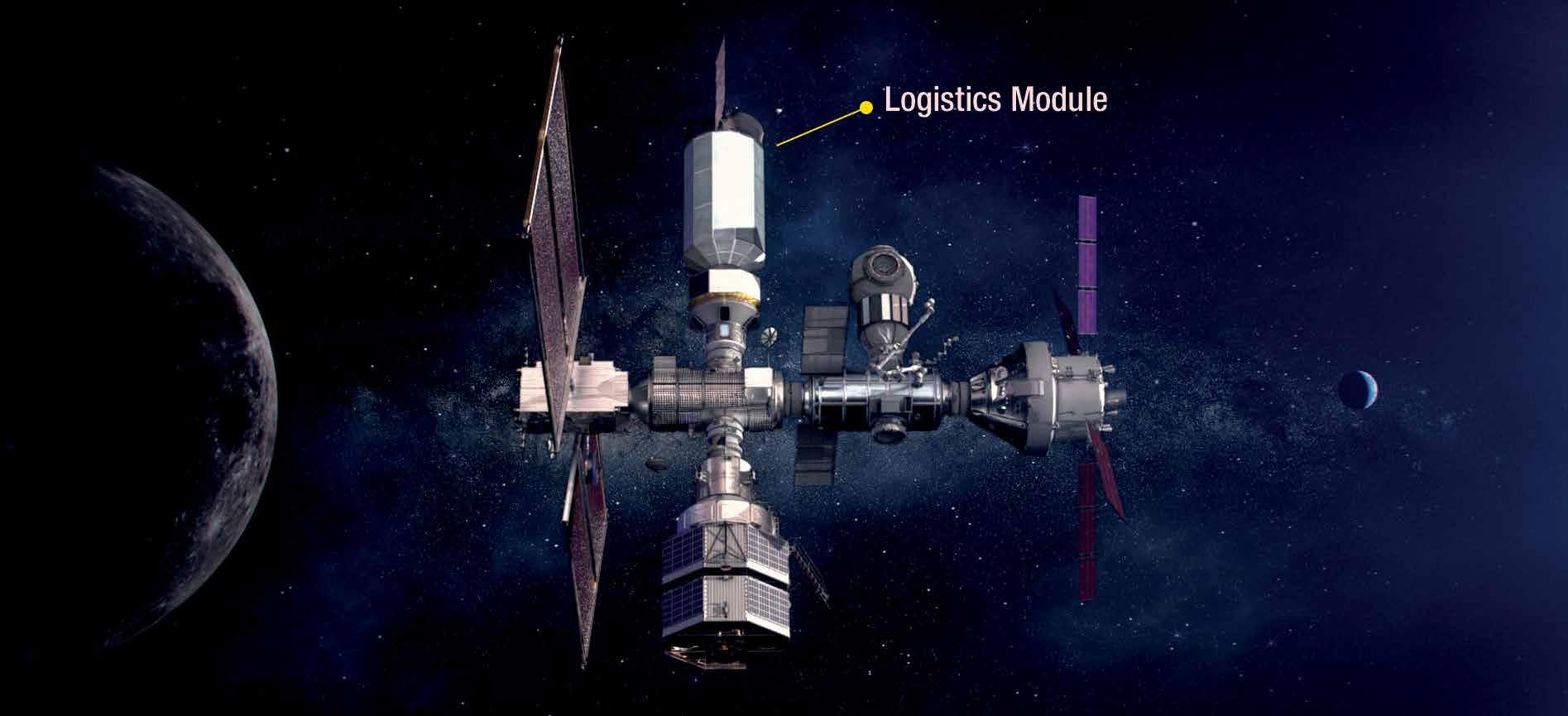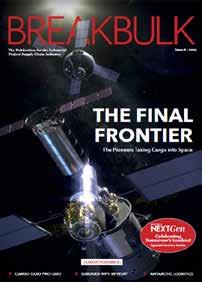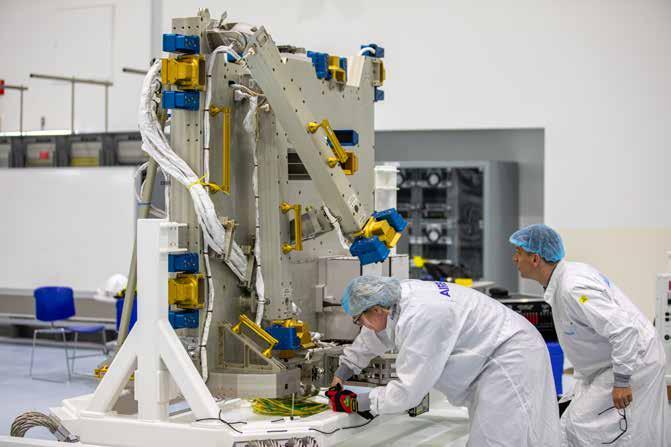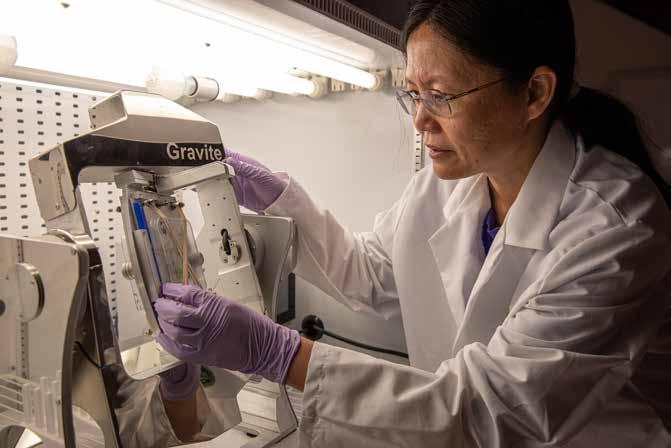
4 minute read
Exploration Research and Technology
ARTEMIS COMPONENTS: Gateway Deep Space Logistics
Illustration of Phase 2 Gateway
Advertisement
The Gateway will be an outpost orbiting the Moon that provides vital support for a sustainable, long-term human return to the lunar surface, as well as a staging point for deep space exploration. It is a critical component of NASA’s Artemis program. The Gateway is a destination for astronaut expeditions and science investigations, as well as a port for deep space transportation such as landers en route to the lunar surface or spacecraft embarking to destinations beyond the Moon.
While the Gateway Program is led out of the agency’s Johnson Space Center in Houston, Deep Space Logistics (DSL) is the Gateway Project office at Kennedy Space Center responsible for leading the commercial supply chain in deep space by procuring services for transporting cargo, equipment, and consumables to enable exploration of the Moon and Mars.
Kennedy's Deep Space Logistics office is the focal point for all Gateway activities conducted at the spaceport, including: • Commercial acquisition and contract management • End-to-end commercial service mission management, insight, and approval • Spaceport host for commercial, deep space logistics, payload processing, and delivery services
Initial commercial partner announcement
• In March 2020, SpaceX was announced as the first awardee under the Gateway Logistics Services contract; a result of an expedited procurement cycle of less than 12 months from Request For Proposal to award announcement.

NASA’s Phase 1 Gateway includes a Power and Propulsion Element combined with a Habitation and Logistics Outpost and logistic supply. Illustration of the SpaceX Dragon XL logistics module. Image credit: SpaceX
Mark Wiese, Deep Space Logistics manager, speaks at the AirCargo 2020 Conference in Nashville, Tennessee, in January. Wiese served as the event’s keynote speaker.

Investing in industry relationships
• DSL focused intensely on outreach with cargo, supply and logistics industry media and stakeholders in 2020, resulting in four magazine cover stories among more than 100 major articles, TV, radio, and podcast interviews for a combined total of 600 million audience views.
• In-person outreach played a significant role in this initiative. Mark Wiese, DSL manager, keynoted the January AirCargo 2020 Conference for 800 people in Nashville, Tennessee. • Leveraging the opportunity further, the DSL team also visited HBCU Tennessee State University's campus to speak with students interested in NASA internships and careers.




Exploration Research and Technology
The Exploration Research and Technology (ER&T) programs supported the agency in fiscal year 2020 with a research and technology portfolio aligned to center roles at Kennedy Space Center and designed to meet the needs of existing and future missions. ER&T worked on more than 90 projects during the fiscal year, significantly contributing to the agency’s human space exploration efforts, including the Artemis program and space technology development. Through a combination of hands-on research at Kennedy plus collaborations with academic institutions, commercial organizations, government agencies, and international partners, ER&T advanced NASA’s vision of discovering and expanding knowledge for the benefit of humanity.
Throughout fiscal year 2020, ER&T supported twenty years of continuous human presence on the International Space Station by providing operations, maintenance, logistics, payload processing storage, and other services to enable science research done on the station.


Support for the space station included sending Nitrogen/Oxygen Recharge System (NORS) tanks to the orbiting lab. ER&T technicians unpacked and inspected a NORS tank inside the Space Station Processing Facility high bay on July 16, 2020, before sending them to Wallops Flight Facility in Virginia.
Working with international partners from Airbus Defense and Space to unpack the Bartolomeo platform in the Space Station Processing Facility high bay on Jan. 30, 2020, ER&T enabled sending Bartolomeo to the International Space Station aboard SpaceX’s 20th Commercial Resupply Services (CRS-20) mission. Bartolomeo provided the station with new payload-hosting capabilities.


ER&T supported Human Exploration and Space Operations in fiscal year 2020 by conducting plant research and production in space. This required working closely with crew on the International Space Station, including NASA astronaut and Expedition 63 Commander Chris Cassidy, who serviced the Veggie Passive Orbital Nutrient Delivery System (PONDS) experiment on April 22, 2020.
ER&T also carried out biological research at Kennedy facilities, including the Microgravity Simulation Support Facility (MSSF) inside the Neil Armstrong Operations and Checkout building. Shown here is Ye Zhang, a project scientist, adjusting a Gravite 3d clinostat on Feb. 11, 2020.









